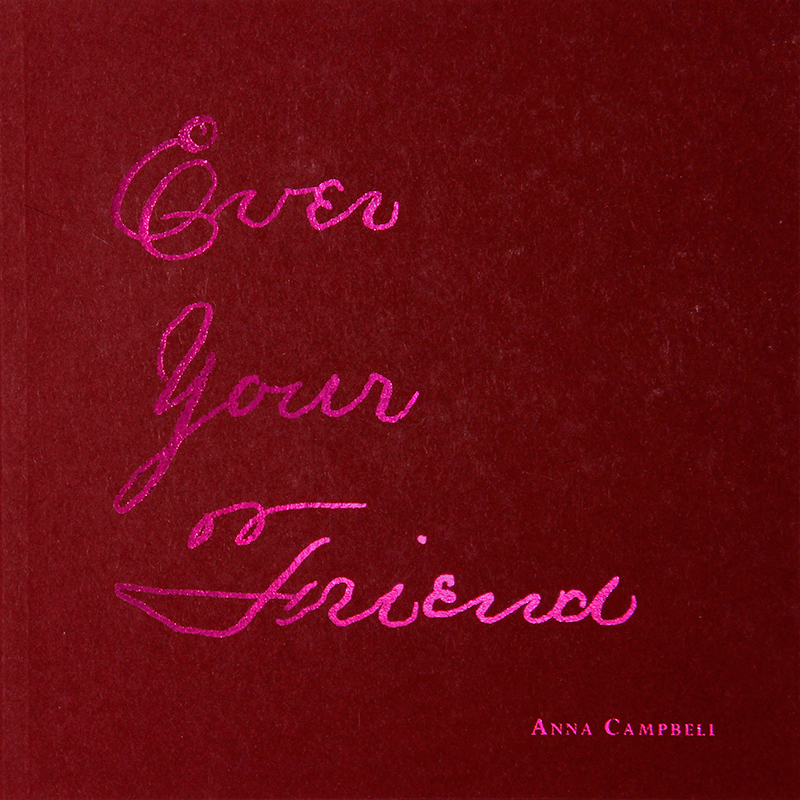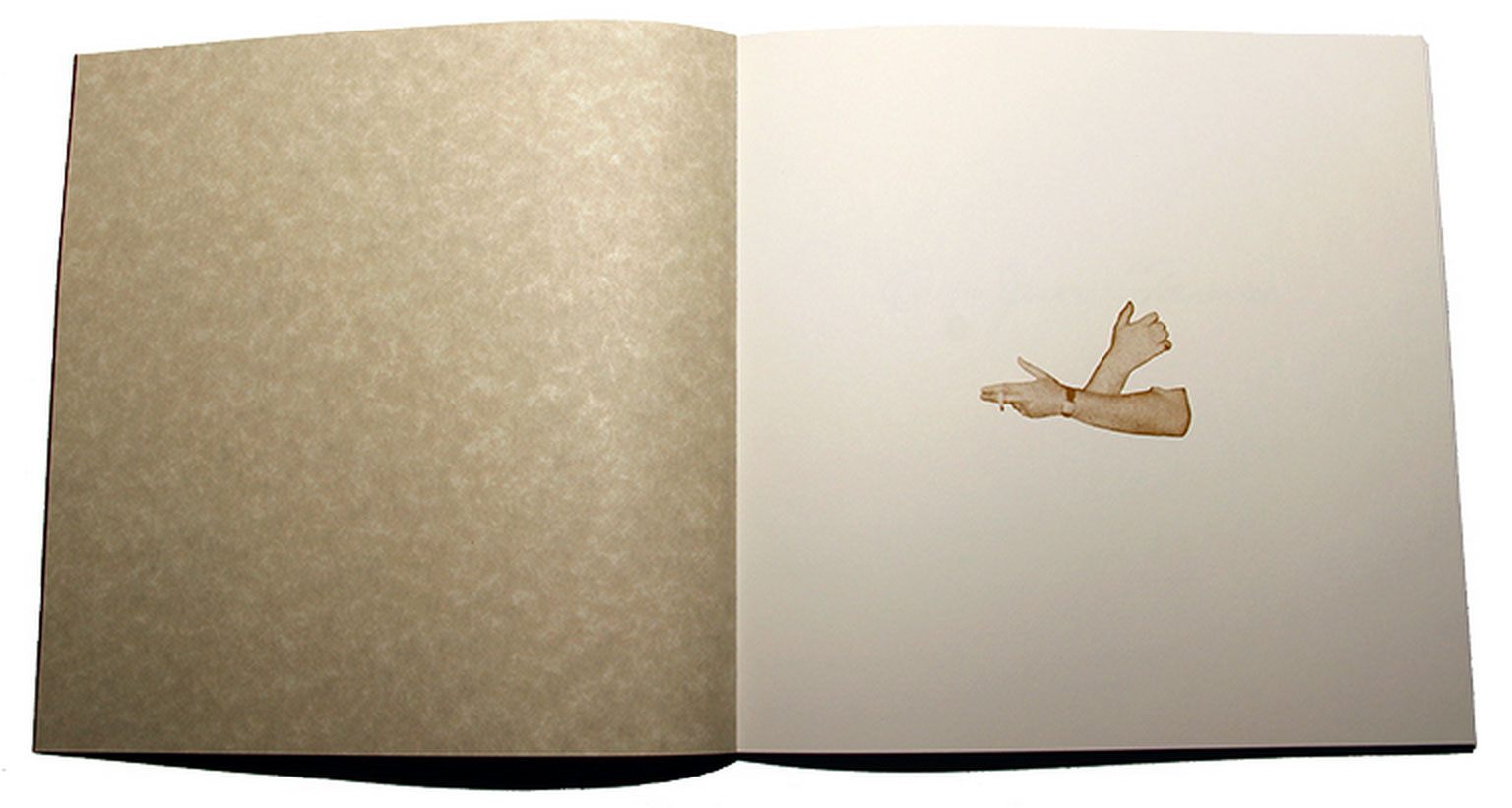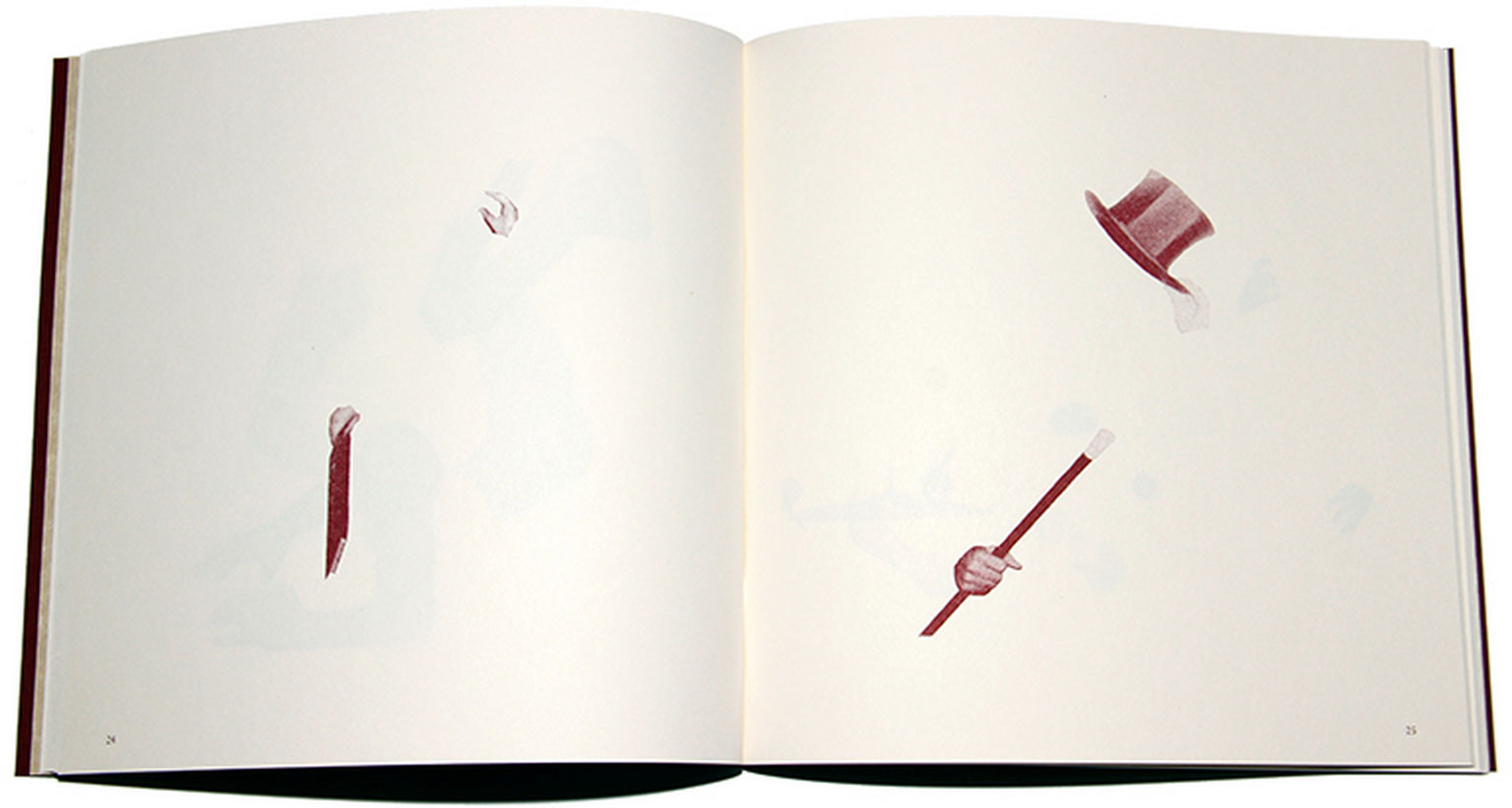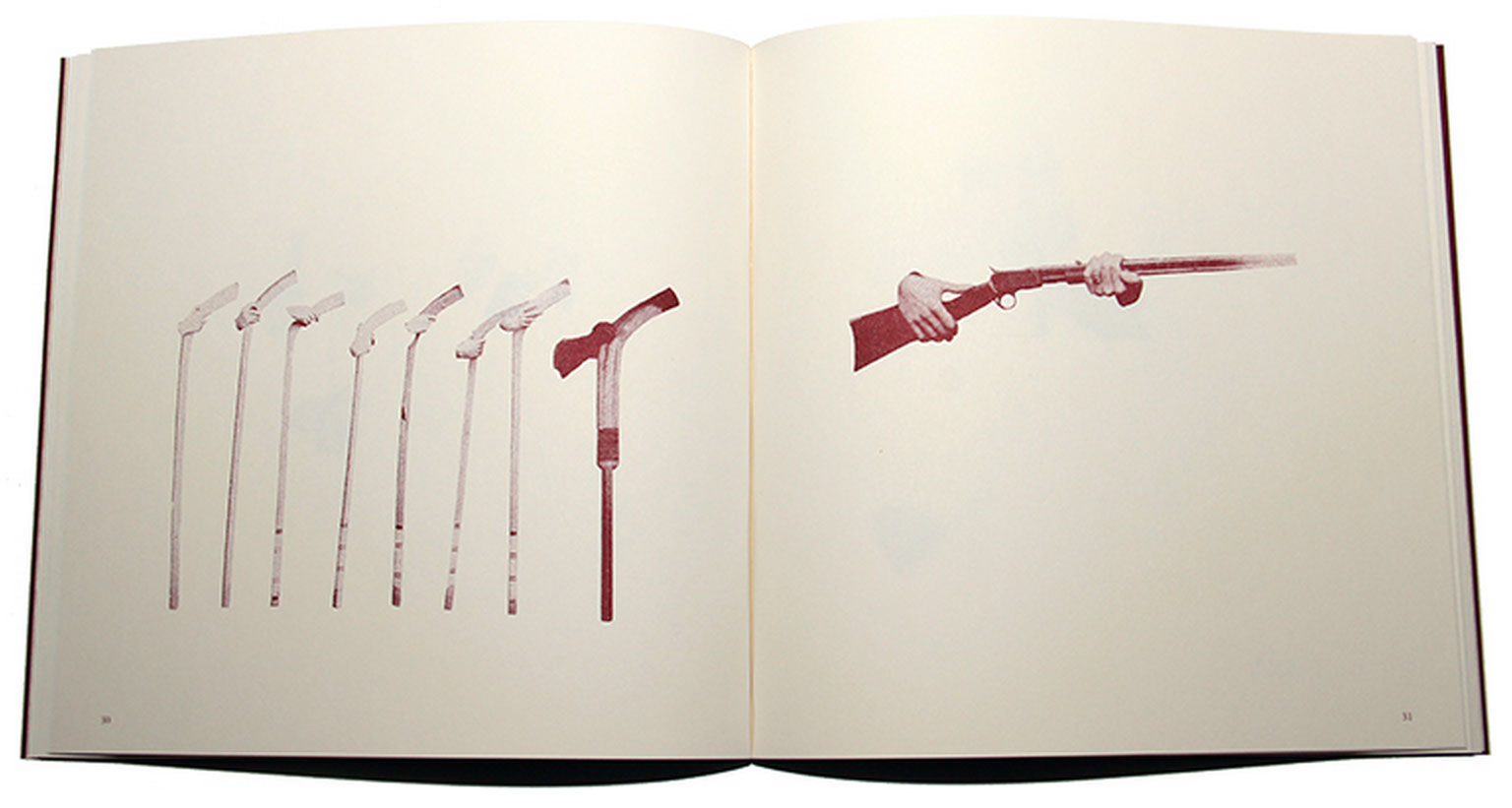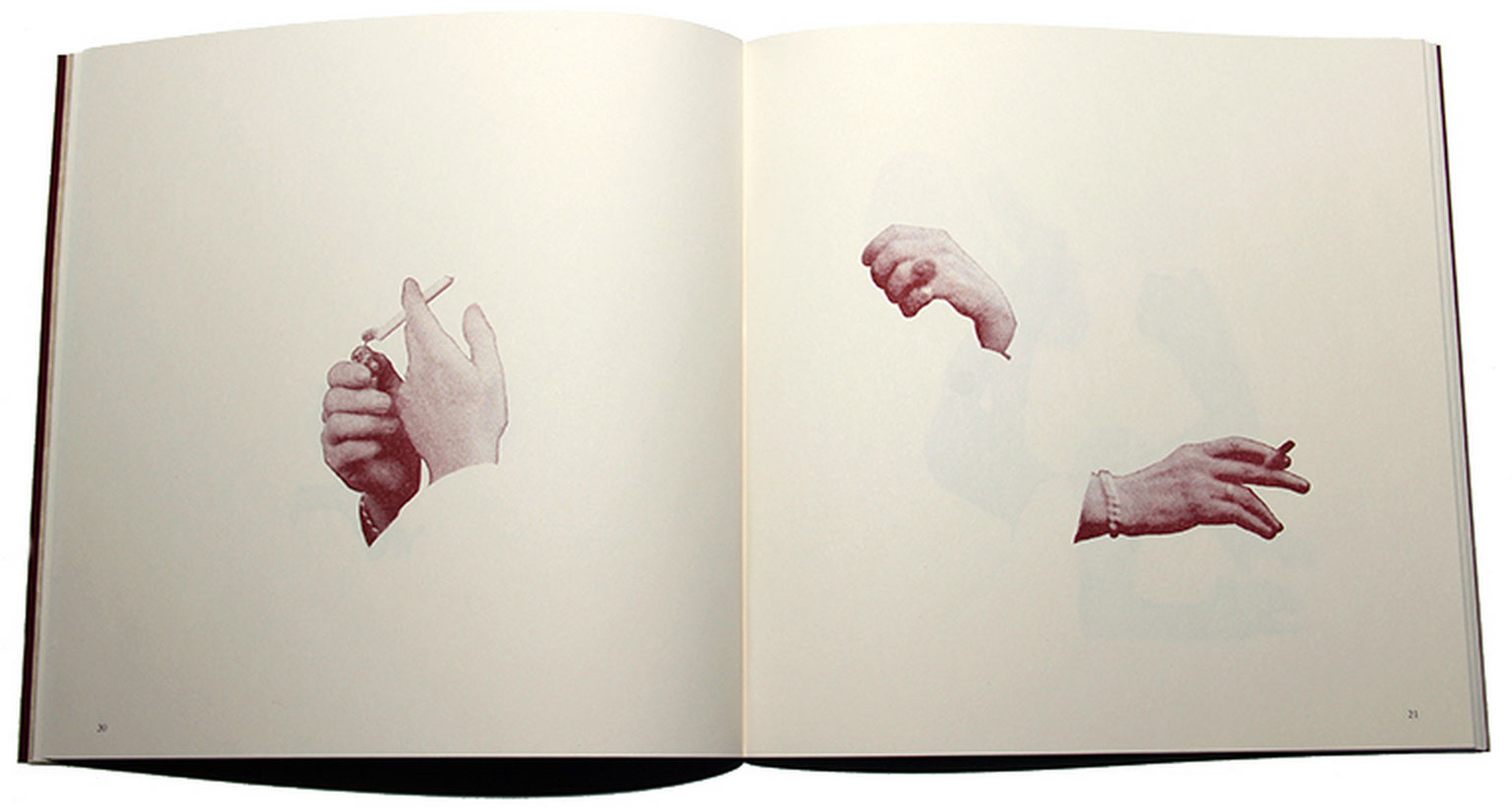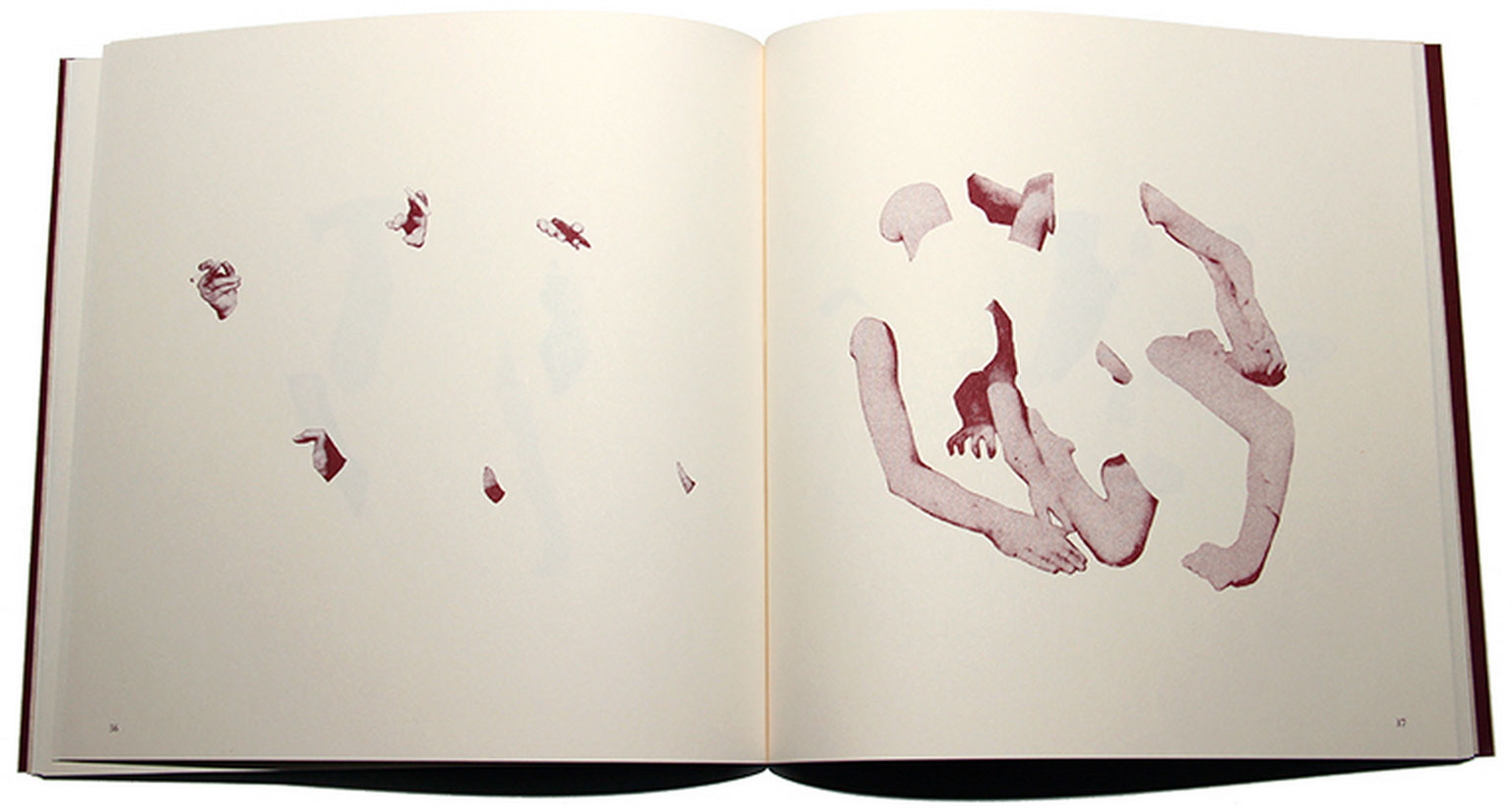| Pride, that old Bitch. |
| silkscreened handkerchief edition of 69; 69 artist prints 14”h x 14″w 2019 |
On the occasion of the 50th anniversary of the Stonewall Riots, Pride has officially become both the aged queen we adore and owe a model of riot-based survival to, and a gluttonous caricature of corporate assimilation. This handkerchief celebrates and reads Pride as the complicated family member she is, while implicating the queer community through the vernacular of flagging, which insists that we either are her or are looking for her. Pride, that old Bitch.’s design is sourced from the 19th century illustrations of yet older bitch Aubrey Beardsley, recomposed into an assembly of arch gestures and/ or tenderly caressing fingers emerging from oversize ruffles. The historical distance of these source images point to the enduring legacies of queer culture, and the unfixed futures of our continued resistance.
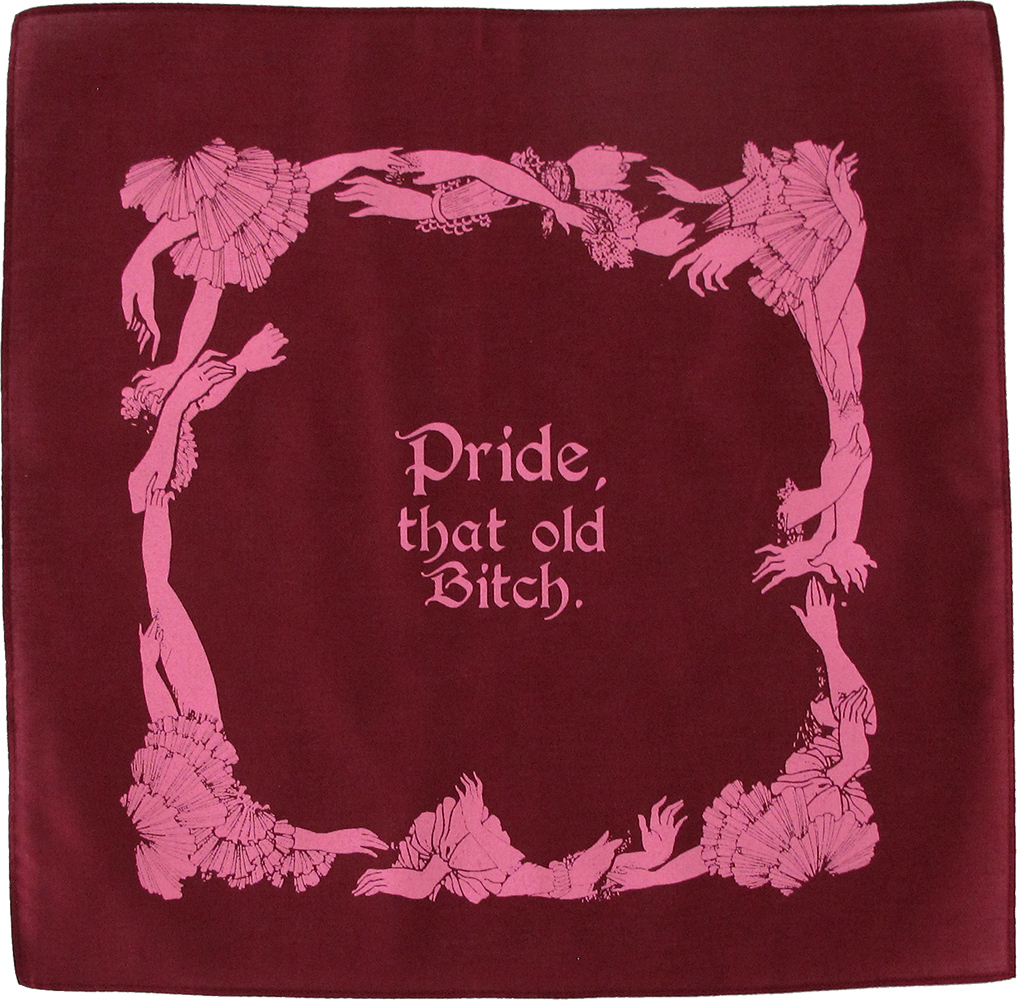
Reach through the tight pucker of time; Feel their survival against your skin
custom-made soap with towel in silk-screened bag; Riso-printed information card
edition of 129
5”h x 4″w x 2″d
2017
edition of 129
5”h x 4″w x 2″d
2017
“A little steam for tradition’s sake. But they made their own heat.” This box-set edition of the ephemera that should have been functions as both memorial homage and just-add-water toolkit. A risograph print collects a series of archival references describing the Everard Baths’ pleasures and dangers, abjection and enduring allure. A drawstring bag silkscreened with the edition’s title invites you to “Reach through the tight pucker of time; Feel their survival against your skin.” The bag opens to reveal an immodestly small towel, and a bar of soap—boasting the size of the baths and imprinted with a pair of crowns flanking Poseidon’s staff— to lather in celebration of the centenary the gay bathhouse would have had, if not shuttered in the early years of the AIDS crisis.
Issue Press | Printed Matter
Issue Press | Printed Matter

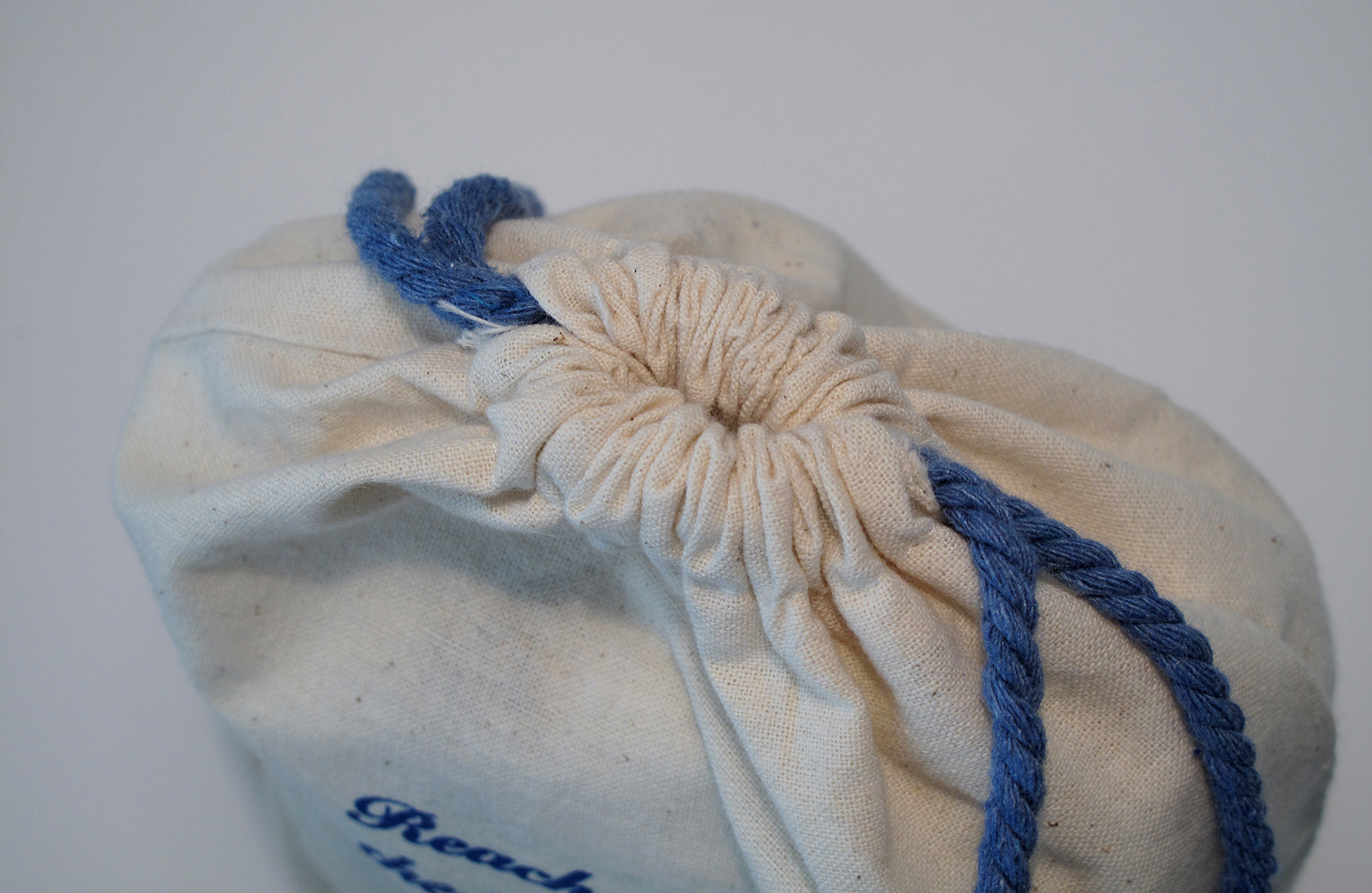
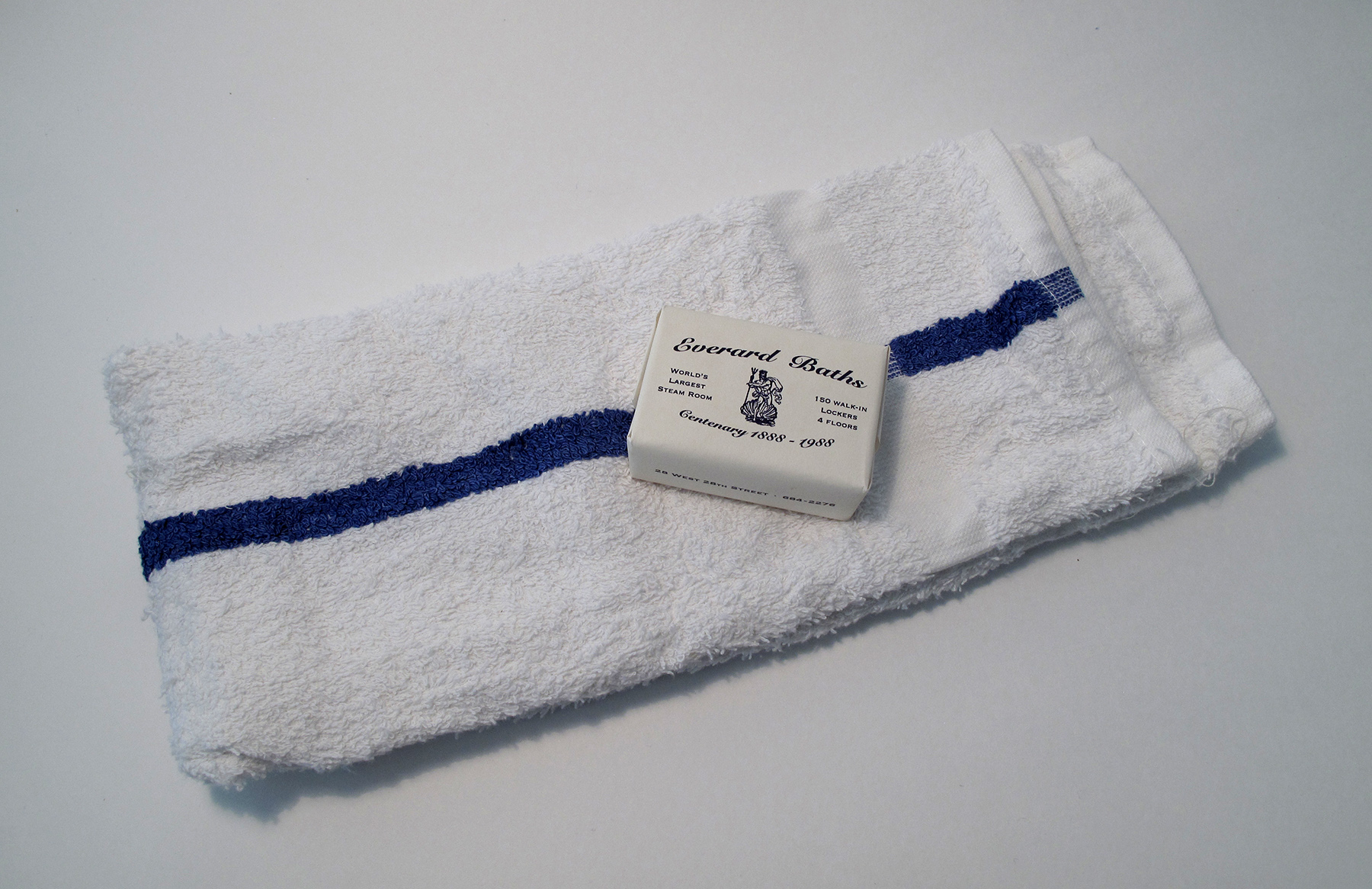
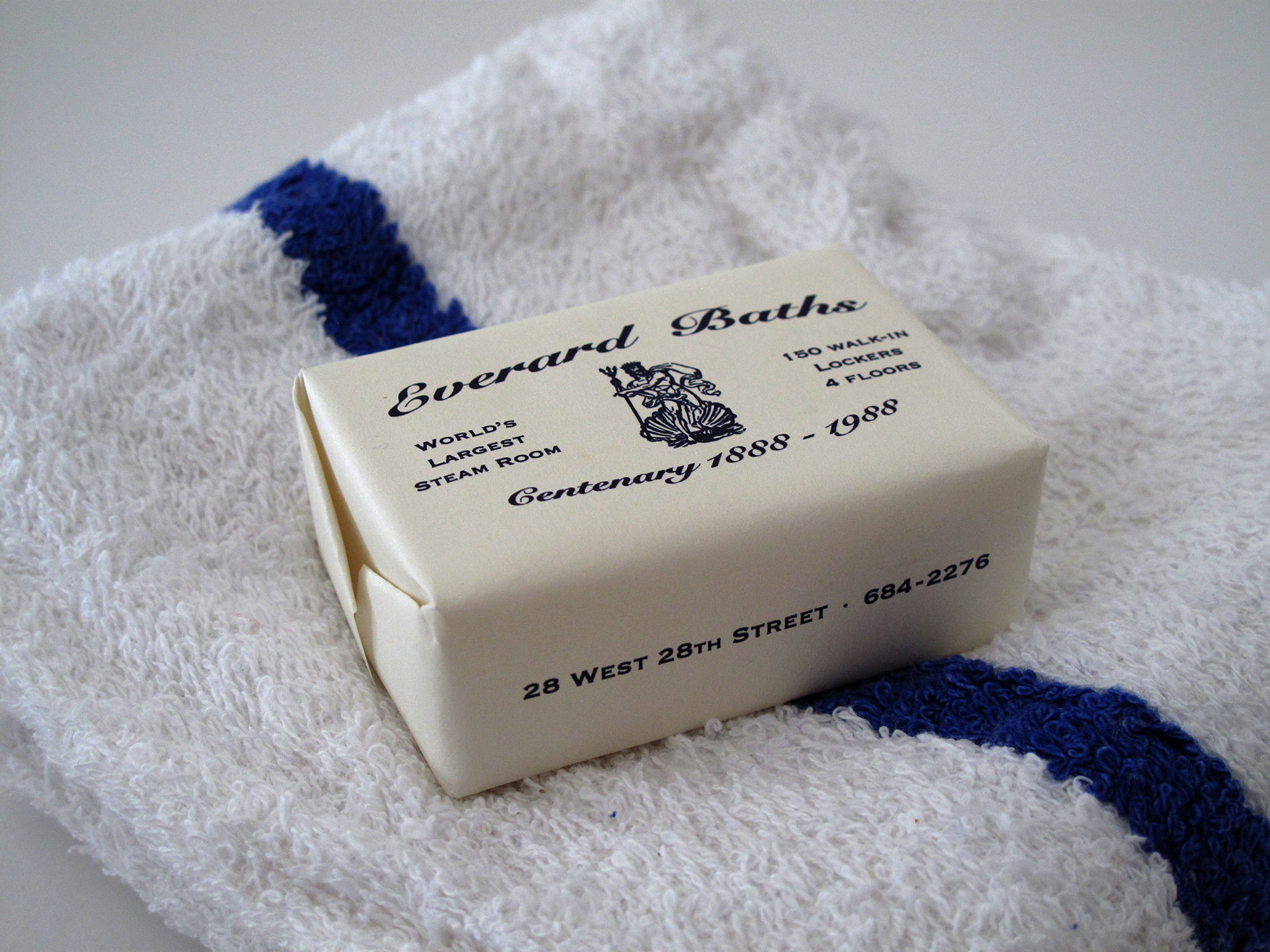
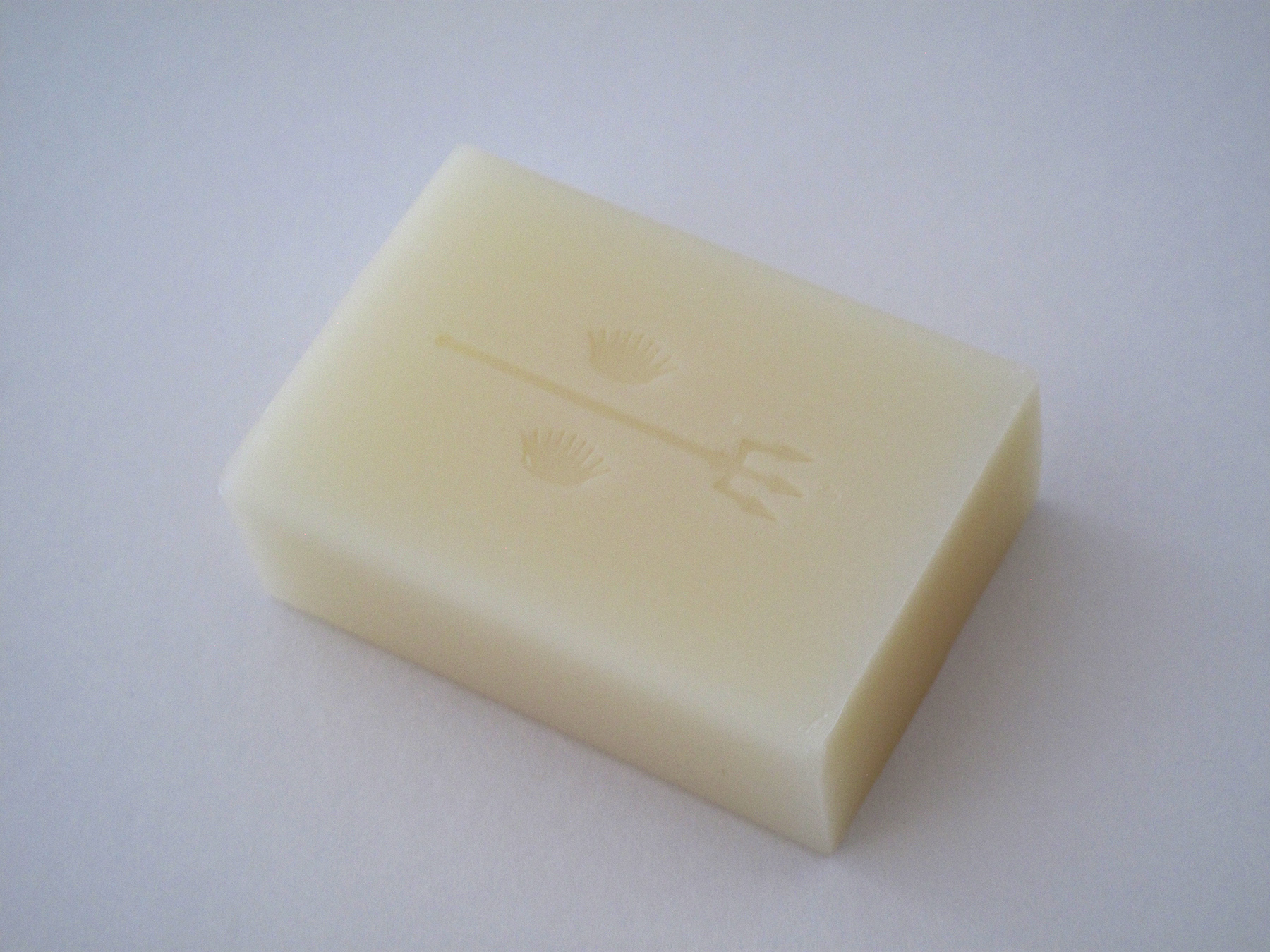
![white card with blue print, recto: A little steam for tradition’s sake. But they made their own heat. • It was true that, having no limits, thanks to penicillin, there seemed no way the escalation of drugs, muscles, ways to have sex, would stop. • And the walls of the rooms did not reach the ceiling - you could hear everything - you couldn’t not hear everything. Slurping and moaning and everybody’s dish about everybody • The Everard, for example, had established itself by the 1930s as the “classiest,” safest, and best known of the baths. • G[ore] V[idal]: I did take Truman to the Everard. Couldn’t have been funnier. “I just don’t like it.” [Mimics Truman Capote.] • the lonely and flesh-hungry from every corner of the nation and from every borough in the city • “That was pure sex and without the frills. No violins.” • Homosexuals Mobilize to Aid Fire Victims • “London, mon cher, is nothing compared to it…” • the stale reek of bodies, poppers, chlorine and marijuana • New York’s most enduring and notorious gay bathhouse, the Everard, occupied what was once the Church of Disciples of Christ […] James Everard converted it into Turkish, Roman, and Electric Baths in 1888 • But nothing at all was posted about AIDS and safe sex • And I often wanted to talk about my Everard adventures, but in those days you spoke to your gay friends about Ethel Merman • All the men were white • Society for the Suppression of Vice • It was hideous, like Kafka. There were wire-mesh walls, and the floors were filthy and stank, whereas the Continental Baths were like ancient Greece.” • The identities of those arrested tell us much about the clientele of the Everard. • where else but in a gay bathhouse “could you find a Park Avenue doctor and a Puerto Rican delivery boy, stripped of all outward appearances of social rank, naked in mutual need. • One night the Everard burned down. People died it was said, because the owners had not hooked sprinklers up. • It’s Sunday in September. I’ve just swallowed a couple of tetracyclines, having just climaxed with an improper stranger, and I’m relaxing in the sauna at Everard’s • V.D. Found Rising in Homosexuals: The free treatment and counseling provided by the city is currently available at the Club Baths at 24th Street and First Avenue, Everard Baths, 28th Street and Broadway and the Continental Baths on the 74th Street near Broadway. • In April last year, the Everard Spa, another bathhouse in Manhattan, was closed. • “We want to save lives,” the Mayor said. • In general one can say that the Turkish baths of America are a very safe place for homosexuals…The people one meets there have not come there to blackmail.” • ”’Faggots’ are given a certain amount of liberty in New York City,” said Michael Rhone, 26, “and most of that is to hang out in sleazy sorts of low places that are substandard. At a straight health spa, you wouldn’t have rooms partitioned halfway up the walls so the fire could spread.” • On weekend nights, there is almost always a waiting line after 10 PM, sometimes over an hour long for dormitory space and longer yet for rooms. • Persistent rumors that it was owned by the Police Athletic League • The Fellatorium • Because of the continuous inspections of the big 2nd Floor dormitory by the guards, the old daisy-chains and mass exhibitions are only memories.](https://freight.cargo.site/t/original/i/298f00e883122ca5189b724fde78fedafe4f9d19f55f4ec23f21bf76d8d8c1a2/reachthroughpucker08.jpg)

foam
edition of 250
6”h x 4″w x 1/2″d
2015
edition of 250
6”h x 4″w x 1/2″d
2015
| Spirit Fingers: After Wittig intercepts a passage from Monique Wittig’s iconically visceral 1973 book The Lesbian Body (original title, Le Corps Lesbien) on the foam silhouette of a hand. Dissonance between the intimate address and invitation of the text, and the hand’s design referencing the public display of affection that as fandom offers a parallel to the internal dissonances at play in various physical exchanges. Sporting events foreground both raw physical aggression and the deft articulation of movement, both communal celebration and the possibility for threat in an impassioned crowd, while the pleasures of erotic encounters often traffic in the promise of a shattering of the self: “You are obliged to hold m/e on the ground because of the shaking of m/y body.” |
Printed Matter | Fuse Works

After Anne Carson, After Sappho
| foil-stamped acrylic pick mounted in laser-cut mountsigned and numbered in an edition of 100 2″ x 2″ 2015 |
This pick – or plectrum, which the lyric poet Sappho is credited with inventing – is foil-stamped with a fragment of Anne Carson’s translation of Sappho’s “Fragment 31,” also known as the “Poem of Jealousy,” sourced from If Not Winter: Fragments of Sappho (Vintage, 2003). Each pick is set into a laser-cut mount that still bears the tendriled smoke patterns of its production, pointing back to the burning energy that fueled the poem.
Printed Matter | Fuse Works
Printed Matter | Fuse Works
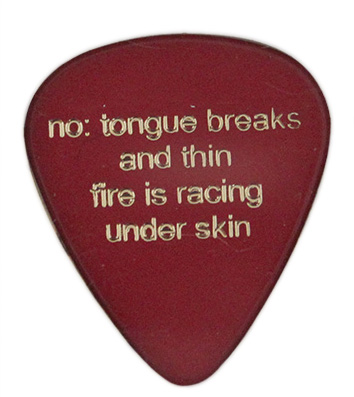
Ever Your Friend
1-color risograph print interiors (in flat gold & burgundy) on 70#t Domtar Cougar Offset Natural, hot foil cover on 80#c French Paper Co. Construction Paver Red, 60#t French Paper Co. Parchtone Aged end sheets; Perfect Bound; 56 pages
edition of 275
7″ x 7″
2014
edition of 275
7″ x 7″
2014
George Wietor has made no shortage of beautiful things on his Risograph duplicators at Issue Press but this extra smart artist book by Anna Campbell is one of our absolute favorites. A terrifically ethical and poetic approach to working with historical materials.
– Half Letter Press
A collection of images abstracted from the photo collection of the Lesbian Herstory Archives in Brooklyn, NY. Compiled during a month in residence at the Archive, these images have been modified, isolating only hands, bare arms, and any objects they may hold. This selective editing prompts the viewer to fill in the gaps not only of the physical image itself but also in the narratives of everyday lesbian life they depict. The essay below is reprinted from Ever Your Friend:
(…)
Fingers curled around a cigarette, a hand on a shoulder, the tension in the space between bodies: the images in Ever Your Friend are fragments drawn from the files of the Lesbian Herstory Archives’ photo collection. Few of the women represented in the collection are well known; many are anonymous. What remains enigmatic about any of them exceeds what those photographs reveal. That their hands, bare arms, and the objects they hold have been isolated from the full context of the archival images parallels the ellipsis of our understanding.
Images in the Archives’ photo collection include ephemera from theatres and nightclubs, clippings from newspapers, portraits, publicity photos, photocopies, postcards, erotica, and the occasional tintype, but the photo collection overwhelmingly consists of vernacular photography documenting parties, protests and everyday lesbian life. These images have largely not been seen outside of the Archives, as a process for securing the permissions for publication was not in place at the time the photo collection was established. My tight focus on small areas of exposure in these photographs allows for the possibility of their reproduction, but also foregrounds the tone of a gesture, the intimate contact between women, and the significance of the lesbian hand as an instrument of sexual pleasure.
The intimacy of paging through this book is meant to extend the experience of researching in the photographic collection; its diasporic distribution functions as an inversion of the aggregation of material by the Archives. As a bound collection, the book’s spreads create a series of formal associations and visual puns that cross geographic, generational, racial and class distinctions.
The title of this volume is borrowed from the back of a portrait photograph that was inscribed “Ever Your Friend, Ida.” The subtlety of that line and all that it might imply aligns with the desiring charge of this project: to re-image profound embodiments, affiliations, and passions through the sparest of gestures.
Issue Press | Printed Matter | Fuse Works
– Half Letter Press
A collection of images abstracted from the photo collection of the Lesbian Herstory Archives in Brooklyn, NY. Compiled during a month in residence at the Archive, these images have been modified, isolating only hands, bare arms, and any objects they may hold. This selective editing prompts the viewer to fill in the gaps not only of the physical image itself but also in the narratives of everyday lesbian life they depict. The essay below is reprinted from Ever Your Friend:
(…)
Fingers curled around a cigarette, a hand on a shoulder, the tension in the space between bodies: the images in Ever Your Friend are fragments drawn from the files of the Lesbian Herstory Archives’ photo collection. Few of the women represented in the collection are well known; many are anonymous. What remains enigmatic about any of them exceeds what those photographs reveal. That their hands, bare arms, and the objects they hold have been isolated from the full context of the archival images parallels the ellipsis of our understanding.
Images in the Archives’ photo collection include ephemera from theatres and nightclubs, clippings from newspapers, portraits, publicity photos, photocopies, postcards, erotica, and the occasional tintype, but the photo collection overwhelmingly consists of vernacular photography documenting parties, protests and everyday lesbian life. These images have largely not been seen outside of the Archives, as a process for securing the permissions for publication was not in place at the time the photo collection was established. My tight focus on small areas of exposure in these photographs allows for the possibility of their reproduction, but also foregrounds the tone of a gesture, the intimate contact between women, and the significance of the lesbian hand as an instrument of sexual pleasure.
The intimacy of paging through this book is meant to extend the experience of researching in the photographic collection; its diasporic distribution functions as an inversion of the aggregation of material by the Archives. As a bound collection, the book’s spreads create a series of formal associations and visual puns that cross geographic, generational, racial and class distinctions.
The title of this volume is borrowed from the back of a portrait photograph that was inscribed “Ever Your Friend, Ida.” The subtlety of that line and all that it might imply aligns with the desiring charge of this project: to re-image profound embodiments, affiliations, and passions through the sparest of gestures.
Issue Press | Printed Matter | Fuse Works
